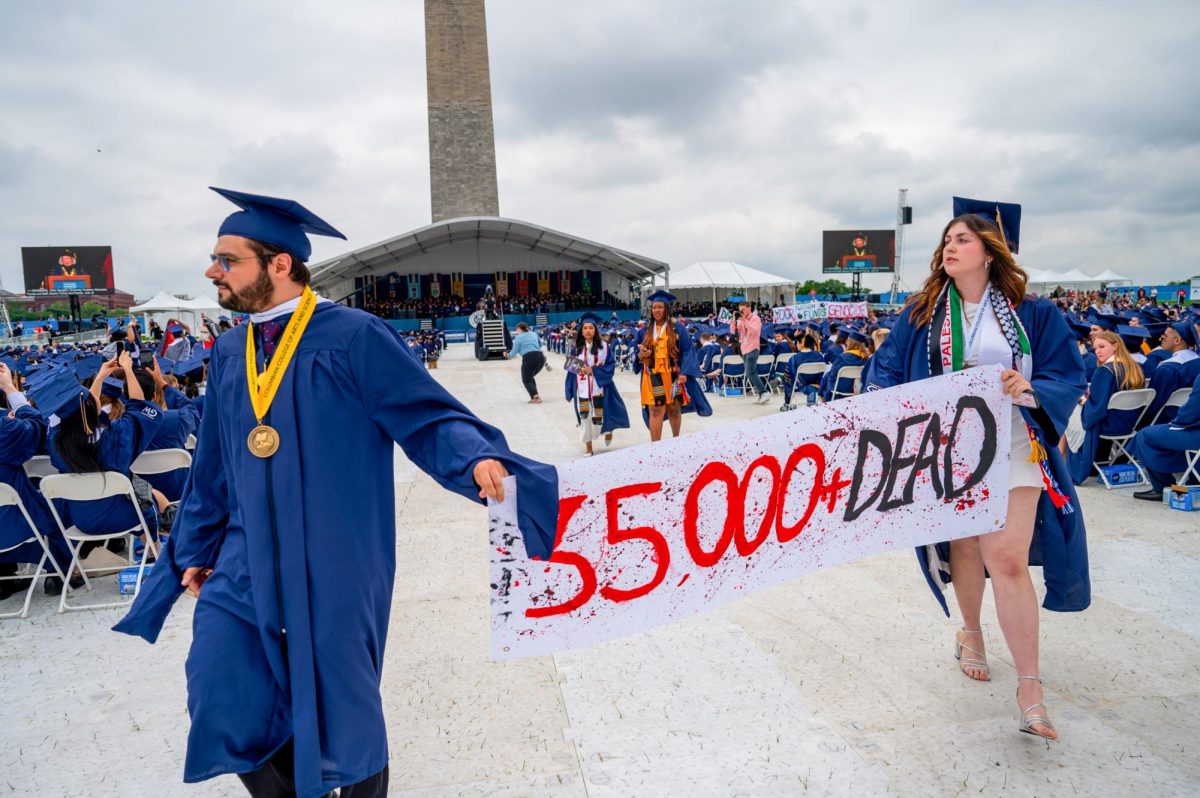As an ax hits the federal budget, the University is joining a herd of universities to pressure the government for research funds and student aid.
GW relies on relationship-building with federal staffers rather than direct lobbying, an approach seen across higher education to cut lobbying expenditures – even in the face of the automatic budget cuts enacted last week, director of federal government relations Kent Springfield said.
Now universities are having a “we-need-to-pull-together moment,” Springfield said. The University joined a group of universities that advocates for science research funding, he added.
GW has not spent any money or hired employees to lobby the federal government since 2007.
“It’s not that helpful to bring in a big fancy firm to say, ‘Stop sequestration.’ It’s not within their power to do that,” Springfield said. “If you’re going to use all that money – and we’re cognizant of when we’re using tuition dollars – what are we going to get out of that process?”
The University spent about $1.5 million from 2003 to 2006 on federal lobbying, according to the Center for Responsive Politics, advocating for transportation and research projects.
On the local level, GW spent $3,824 on lobbying the D.C. and Virginia governments two years ago, according to tax filings, through the firm McGuireWoods. It lobbied the Virginia legislature for tuition assistance for a nursing program.
Springfield said GW has continued to see its approach as more cost-effective, especially after a federal earmarks ban two years ago and no D.C. senators to lobby.
Competitor schools like Boston University and Georgetown University have spent significantly more on lobbying recently, dishing out $1.5 million and $40,000 last year, respectively.
“There’s been a sense that in the past [universities have] all sort of fought for our own little piece,” Springfield said. “Across the board, people need to explain the value of what we’re doing and not put each other down.”
One example of a GW pitch to Congress is collecting funding for an autism research center by organizing an “autism day” centered around a presentation on Capitol Hill last September to Rep. Jim Moran, D-Va.
“We’ve really had an effort to raise the University’s profile on a science advocacy side that didn’t really exist before,” Springfield said. “I walked into a lot of meetings where people were surprised to see GW there.”
Russ Choma, a reporter for the Center for Responsive Politics, said the strategy might not be effective, but is common among higher education organizations and universities, which pulled back on lobbying more than any other industry last year.
“Lobbying definitely pays off, and it’s hard to get something in Washington without asking for it,” he said. “Sequestration is a big deal because of the research money and they’re concerned about it, but a lot of universities are also constrained.“
The University earned almost half of its federal awards, or about $53 million, from the National Institutes of Health for research grants last fiscal year. The NIH took a 5.1 percent hit March 1 when sequestration went into effect, and will grant fewer competing awards.
David Moore, senior director of government relations at the Association of American Medical Colleges, which spent $2.2 million on lobbying last year for its member schools like GW, said the hit has the group of universities looking for answers.
“Certainly there are challenges as the fiscal environment becomes more constrained. Institutions and associations have to work harder to make the case to ensure funding in those areas,” Moore said.
This article was updated March 7, 2013 to reflect the following:
The hatchet incorrectly referred to the Association of American Medical Colleges as the American Association of Medical Colleges. We regret this error.






